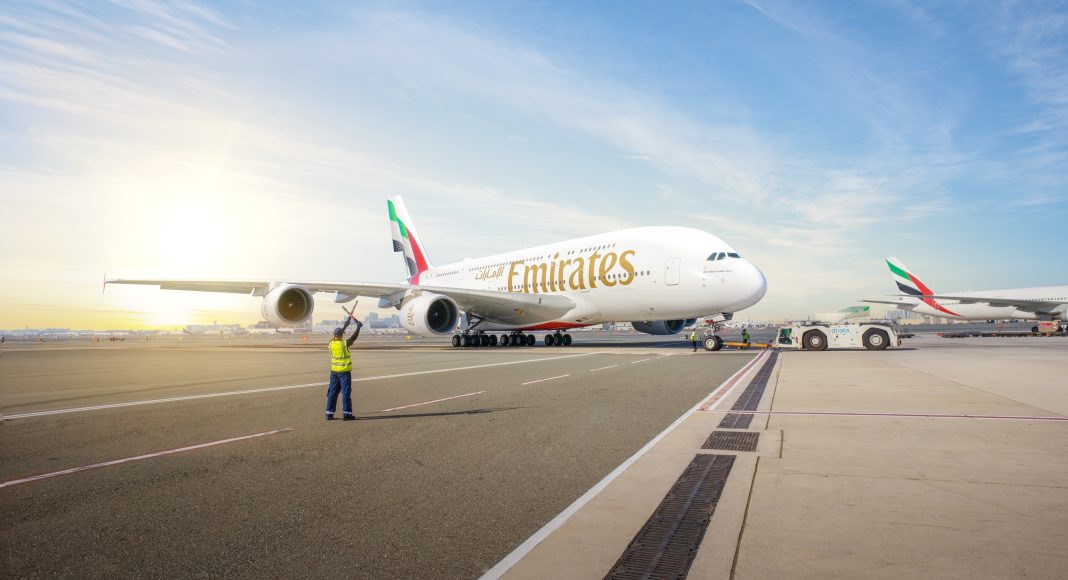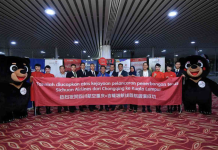DUBAI, UAE, 13 November 2025: The Emirates Group reports a new record half-year financial performance, posting a profit before tax of AED 12.2 billion (USD3.3 billion) for the first six months of 2025-26, making this the fourth consecutive year of record profitability for the half-year reporting period.
After accounting for income tax charges, the group’s profit after tax is AED 10.6 billion (USD2.9 billion), up 13% from last year.

Illustrating its strong operating performance, the group maintained a robust EBITDA of AED 21.1 billion (USD5.7 billion), 3% higher than the AED 20.4 billion (USD5.6 billion) reported for the same period last year.
Group revenue was AED 75.4 billion (USD20.6 billion) for the first six months of 2025-26, up 4% from AED 70.8 billion (USD19.3 billion) last year.
The group closed the first half year of 2025-26 with a record cash position of AED 56.0 billion (USD15.2 billion) on 30 September 2025, compared to AED 53.4 billion (USD14.6 billion) on 31 March 2025. The group has been able to tap into its own strong cash reserves to support business needs, including funding for new aircraft deliveries and servicing existing debt obligations. The group also paid the remaining AED 2 billion (USD545 million) in dividends to its owner, of the AED 6 billion (USD1.6 billion) declared during the financial year 2024-25.

His Highness (HH) Sheikh Ahmed bin Saeed Al Maktoum, Chairman and Chief Executive, Emirates Airline and Group said: “The Group has once again delivered an outstanding performance, surpassing our half-year results of last year to achieve a new record profit for H1 2025-26. I’m delighted to note that Emirates maintains its position as the world’s most profitable airline for this half-year reporting period.
“This performance was primarily driven by the unflagging demand and growing customer preference for our product and services, which drove revenue growth and profitability.
“Emirates and dnata have invested billions to continually enhance our products and services, to bring new products to market, to improve our operations through innovation and technology, and to look after our employees who ensure our customers’ safety and satisfaction. These are core to our DNA.
“The group’s strong profitability enables us to continue making these investments, and to scale up our proven business models in concert with Dubai’s growth as a global city of choice for talent, for businesses, and for tourists.”
HH Sheikh Ahmed added: “Global demand for air transport and travel services has been buoyant, despite geopolitical events and economic concerns in some markets. We expect this demand resilience to continue for the rest of 2025-26 and look forward to increasing our capacity to grow revenues as new A350 aircraft join the Emirates fleet, and new facilities come online at dnata.”’
Airline operations
Emirates continued to enhance its network and connectivity options through its Dubai hub. During the first half of 2025-26, Emirates launched new flight services to: Danang, Siem Reap, Shenzhen and Hangzhou. As of 30 September, Emirates’ passenger and cargo network spanned 153 airports in 81 countries and territories.
The airline strengthened its network connectivity by deploying 28 additional weekly scheduled flights to Antananarivo, Johannesburg, Muscat, Rome, Riyadh and Taipei.
Providing even more connection options for customers, during the first six months of 2025-26, Emirates entered agreements with three codeshare and interline partners: Air Seychelles, Condor, and Aurigny.
Between 1 April and 30 September, Emirates received five new A350 aircraft, adding more Business Class and Premium Economy seats to the airline’s inventory. During this period, 23 aircraft (six A380s, 17 Boeing 777s) with fully refreshed interiors rolled out of the airline’s USD 5 billion retrofit programme. This enabled Emirates to bring its latest cabin products to even more markets, including the industry-leading Emirates Premium Economy. By 30 September, Emirates Premium Economy was available to customers flying between Dubai and 61 cities.
On the ground, “Emirates First” opened at Dubai Airport, offering First Class customers and Platinum Skywards members a luxurious private check-in area and experience. In the first six months of 2025-26, Emirates accelerated the roll-out of its retail strategy with the opening of new concept travel stores in Accra, Bangkok, Geneva, Jakarta, Mauritius, Osaka, Seoul, and Singapore.
Emirates continued to progress on its environmental initiatives, uplifting sustainable aviation fuel (SAF) where available and feasible, including at 37 airports. In April, Emirates joined the Aviation Circularity Consortium (ACC), a network of organisations committed to building a circular economy for aviation and creating new pathways to accelerate decarbonisation through high-value circularity in the global supply chain.
In the first half of 2025-26, Emirates made notable investments to boost its global brand visibility. The airline signed multi-year sponsorship deals to become the Platinum Partner of FC Bayern Munchen, the Official Main Sponsor of Real Madrid Basketball, and Premium Partner and Official Airline Partner of the Investec Champions Cup and European Professional Club Rugby (EPCR) Challenge Cup. Emirates also extended its partnership with ATP as a Premier Partner and Official Airline of the ATP Tour through 2030, as well as its shirt sponsorship with Olympique Lyonnais, which will run through 2030.
Overall capacity during the first six months of the year increased by 5% to 31.3 billion Available Tonne Kilometres (ATKM) due to expanded flight operations. Capacity measured in Available Seat Kilometres (ASKM) increased by 5%, whilst passenger traffic carried measured in Revenue Passenger Kilometres (RPKM) was up by 4% with an average Passenger Seat Factor of 79.5%, compared with 80.0% during the same period last year. Emirates carried 27.8 million passengers between 1 April and 30 September 2025, up 4% from the same period the previous year.
Profit before tax
Cementing its position as the world’s most profitable airline for the half-year reporting period, Emirates’ profit before tax for the first half of 2025-26 hit a new record of AED11.4 billion (USD3.1 billion), compared to AED 9.7 billion (USD2.6 billion) last year. Emirates’ profit after tax is AED9.9 billion (USD2.7 billion), up 13% from last year.
Emirates’ revenue, including other operating income, of AED65.6 billion (USD17.9 billion) was up 6% compared with AED 62.2 billion (USD 16.9 billion) for the same period last year. The airline’s new record revenue can be attributed to an unabated travel appetite across markets and customer preference for Emirates’ products and services, particularly its premium cabins.
Emirates’ operating costs (including fuel) grew by 4% in line with increased operations. Fuel remains the largest component of the airline’s operating cost at 30%.
Driven by customer demand and increased operations during the six months, Emirates’ EBITDA of AED19.7 billion (USD5.4 billion) remained strong, up 3% compared to AED19.1 billion (USD5.2 billion) for the same period last year.
For more information on Emirates or to book flights, visit: www.emirates.com.
(Source: Your Stories — Emirates)








